Table of Contents[Hide][Show]
When it comes to resetting your prediabetes blood sugar balance, breakfast often poses a significant challenge.
Many traditional breakfast options can spike blood sugar levels, making it crucial to find alternatives that are both delicious and nutritious.
Let us help you find new inspiration and motivation for creating a balanced breakfast that supports blood sugar balance and boosts your metabolism, too.
Recap of Blood Sugar Goals
There is a direct relationship between your after-meal blood sugar levels and your A1c. Take a look at this chart.
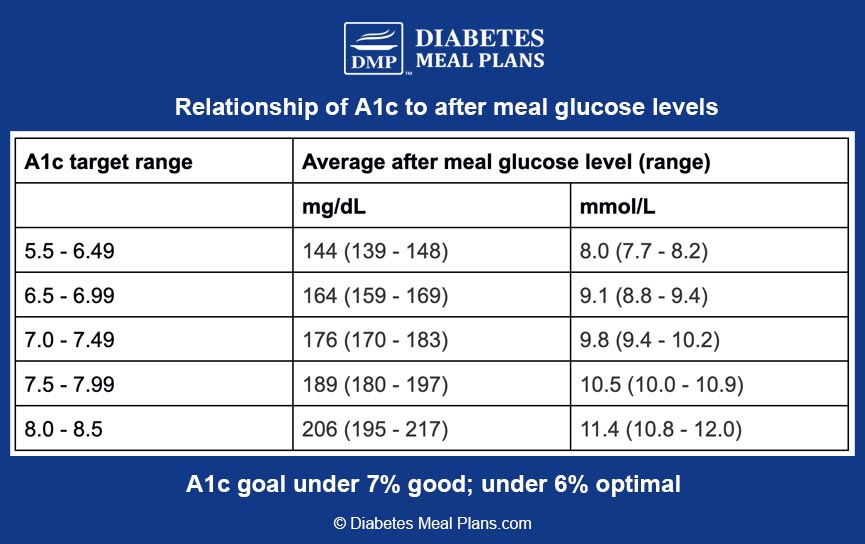
The primary goal in prediabetes is to maintain blood glucose levels within a healthy range. If you use a glucose monitor (not everyone does with prediabetes), aim for a level that’s under 140 mg/dl (7.8 mmol/l) two hours after meals.
If your blood sugar levels are higher after breakfast, adjusting your meal choices can help lower your after meal levels, and this will subsequently lower your A1c levels.
And here’s another thing you need to know: carbohydrates are the #1 nutrient that influences your blood sugar levels.
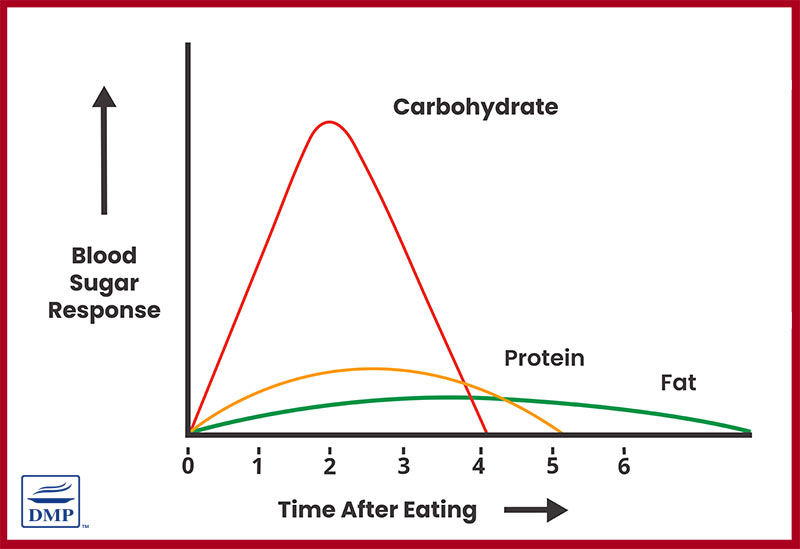
Now that you know that, let’s look closer at breakfast options.
Comparing Two Breakfasts
Traditional Breakfast
A common breakfast might include toast, cereal, and fruit juice – and that’s a lot of carbohydrates to eat at one meal!
Approximate carbohydrate content:
- 2 slices of whole grain toast: 25g carbs, 136 calories, 2.6g fiber
- 1 cup of whole wheat cereal: 25g carbs, 113 calories, 3.2g fiber
- 1 glass of orange juice: 26g carbs, 112 calories, 0.5g fiber
This meal totals 76 grams of carbs and 6.3 grams of fiber, and around 10 grams of protein.
Again, that’s a lot of carbohydrates – 76 grams of carbs in one meal will lead to high blood sugar levels two hours later, exceeding the recommended range.
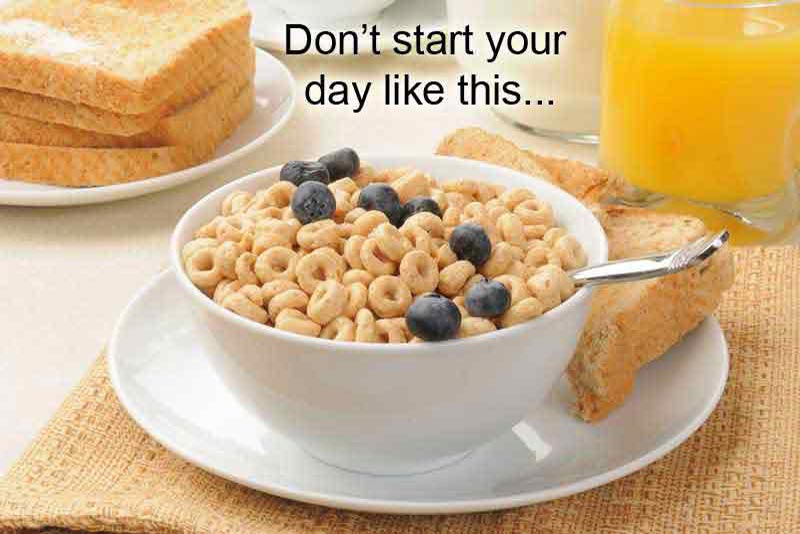
Protein-Rich Breakfast
Now, consider a protein-rich Mixed Veggie Egg Scramble with onions, carrots, zucchini, and spinach, topped with avocado and diced tomato.
This meal contains:
- 22 grams of carbs
- 12 grams of fiber
- 23 grams of protein
This option provides a balanced intake of nutrients that keeps your blood sugar stable. Plus, because it is protein-rich – twice as much as the traditional breakfast – your appetite will stay satisfied longer.
Protein is incredibly important – and we’ll share more about that below, but first, let’s explore yes and no foods.

Breakfast Foods to Avoid or Minimize
Breakfast Cereals
Most breakfast cereals are high in carbs and added sugars, offering little nutritional value. Even healthier options like Shredded Wheat and steel-cut oats can be high in carbs, making them less suitable for managing blood sugar.
If you are going to include healthier grain options like oats, limit to around 1/4 cup per serve.
Whole Wheat Products
Whole wheat bread and cereals are mostly carbs. For instance, one slice of whole wheat bread can contain anywhere from 13-25 grams of carbs, and a small bowl of whole wheat cereal has about 25 grams.
Fruit Juice
Juicing fruit removes the fiber and concentrates the sugars, leading to rapid blood sugar spikes. Avoid fruit juices to prevent these spikes.
High-Carb Breads and Pastries
Bagels, donuts, and other flour-based foods can contain around 50 grams of carbs per serving, making them unsuitable for a prediabetes-friendly diet.
Breakfast Foods to Include
Protein-Rich Foods
- Eggs: A versatile source of high-quality protein, with one large egg providing about 6 grams of protein. Contrary to popular belief, eating eggs does not increase the risk of heart disease.
- Bacon and Sausage: Can be included in moderation. Though processed, they are low in carbs.
- Other Protein Sources: Beef, chicken, tofu, cream cheese, cottage cheese, cheddar, mozzarella, plain Greek yogurt, and milk are excellent protein sources.
- Nuts and Seeds: High in fiber, protein, and healthy fats, nuts sustain energy levels throughout the morning.
- Protein Powders: Whey or plant-based protein powders can be incorporated into smoothies or breakfast meals. Recommended protein powders are:
Vegetables
Including vegetables in breakfast may seem unconventional but is highly beneficial. Vegetables provide essential nutrients and help maintain blood sugar levels.
Slow Carbs
Beans and legumes, like a quarter can of baked beans, offer slow-releasing carbs that help stabilize blood sugar.
Fresh or Frozen Fruit
A bit of fresh or frozen fruit can add natural sweetness to your breakfast without causing significant blood sugar spikes, but focus on lower carb fruits like berries and seed fruits like apricots, plums and peaches.

Delicious Breakfast Ideas
Egg-Based Meals

- Omelets: Filled with veggies, chopped chicken, diced ham, cottage cheese, or crumbled feta.
- Scrambled Eggs: Mixed with vegetables like zucchini and topped with feta or goat cheese.
- Egg Muffins: Made with mushrooms, chives, spinach, and tomatoes, cooked in a muffin pan.
- Soft-Boiled Eggs: Paired with chicken strips or steamed asparagus for dipping.
TRY THESE RECIPES: Cheesy Scrambled Eggs and Spinach and Tomato Egg Muffins
Hearty Protein Meals
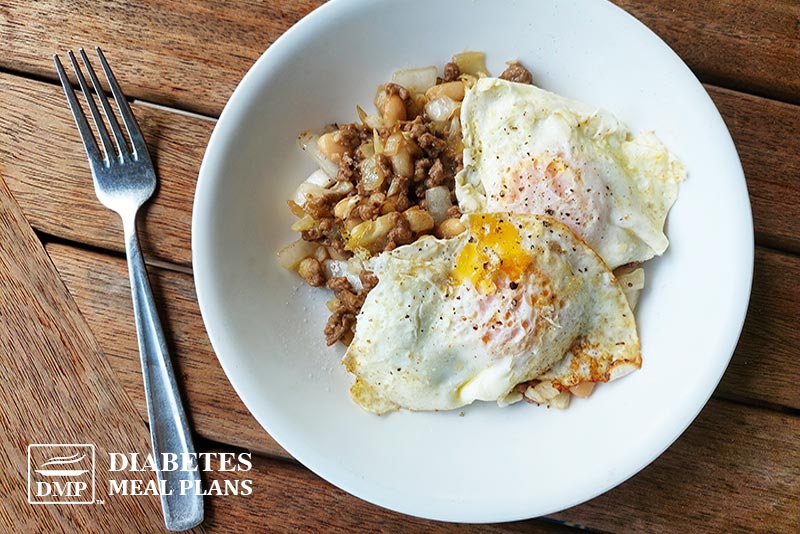
- Meat Patties with Vegetables and Eggs: A filling option for a hearty breakfast.
- Ground Meat Stir Fry with Eggs: Ground chicken, broccoli, onion, white beans, and bone broth sauce topped with sunny-side-up eggs and avocado.
Smoothies
Blend protein powder, unsweetened cocoa, avocado, milk, mixed berries, vanilla extract, nuts, and seeds for a nutritious start to your day.
TRY THESE SMOOTHIES: Click here – includes 3 tasty options!
Nut-Based Cereals
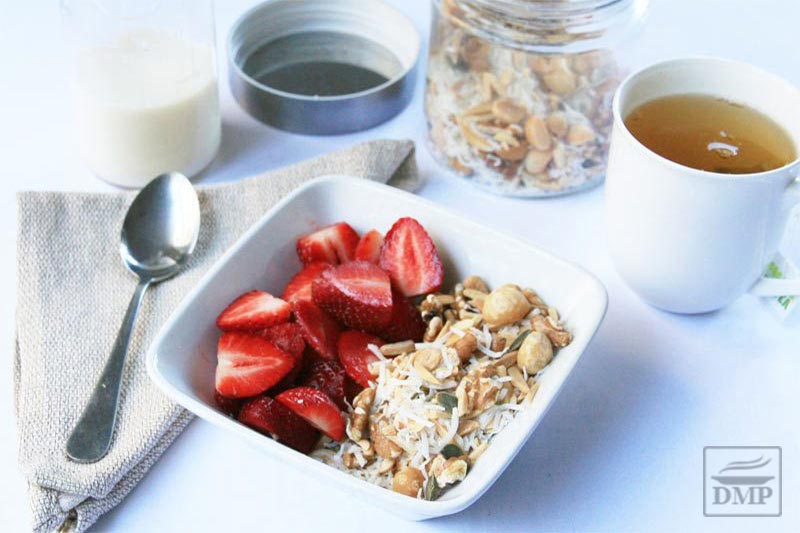
Make your own cereal with nuts, seeds, coconut, and cinnamon, topped with milk, yogurt, and berries.
TRY THIS RECIPE: Roasted Nut Muesli
Protein Pancakes and Muffins
- Protein Pancakes: Made with protein powder, coconut or almond flour, and eggs, topped with berry syrup or sugar-free maple syrup.
- Berry Muffins: Made with almond flour for a tasty breakfast treat.
Homemade Baked Beans
Use green beans, bell peppers, and tomatoes or opt for a small portion of canned baked beans.
Soups and Leftovers
Soups can make a great breakfast option, as can leftovers from previous meals.
Key to a Prediabetes-Friendly Breakfast
Building a prediabetes-friendly breakfast involves focusing on protein-rich foods, low carbs, and nutrient-dense ingredients.
This approach will help rebalance blood sugar, reduce hunger, and boost your overall metabolism to promote weight loss and maintenance.
Why a Protein-Rich Breakfast?
Studies have shown that a high-protein breakfast leads to more stabled blood sugar and appetite satisfaction throughout the day.

As you saw in the picture before, protein has a minimal impact on blood sugar levels compared to high-carb meals. Protein also supports muscle maintenance, efficient weight loss, and overall metabolic function.
Conclusion
Breakfast can be enjoyable and healthy with prediabetes.
By choosing the right foods, you can keep your blood sugar levels stable and support your overall health.
For more breakfast ideas and recipes, along with ongoing support from nutrition specialists – join us as a member today!
References
References:
- Protein-Rich Diet and Prediabetes: PubMed
- Big Breakfast and Glucose Control: Wiley Online Library
- Protein’s Impact on Glucose and Insulin: NCBI

Leave a Reply